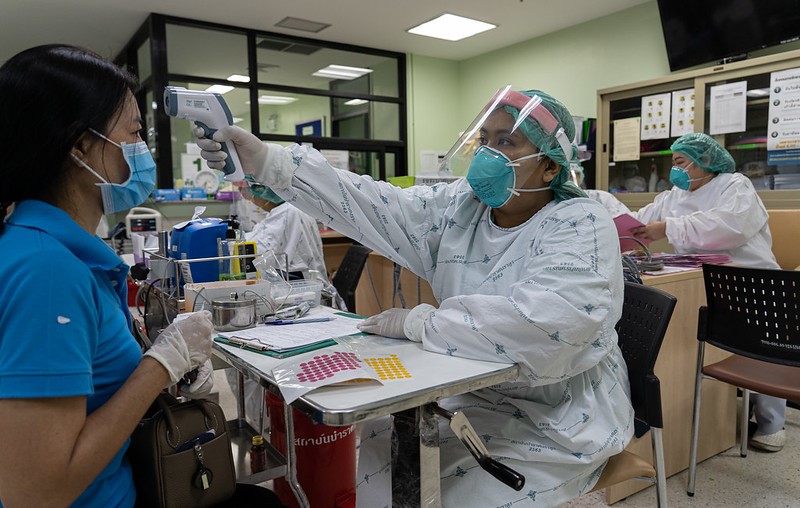
In the first 2 years of the COVID-19 pandemic, Californians who worked in healthcare, "other services," manufacturing, transportation, and retail trade industries had higher death rates than the professional, scientific, and technical industries, which had some of the lowest rates, finds a study published today in the Annals of Epidemiology.
California Department of Public Health researchers used death certificates to identify COVID-19 deaths that occurred from January 2020 to May 2022 among 17.7 million residents ages 18 to 64 years. They also used the Current Population Survey to estimate the number of working-age adults at risk of COVID-19 death.
Pandemic waves were categorized as wave 1 (March to June 2020), wave 2 (July to November 2020), wave 3 (Epsilon and Alpha variants, December 2020 to May 2021), wave 4 (Delta, June 2021 to January 2022), and wave 5 (Omicron, February to May 2022).
Disparities, increased exposure noted
COVID-19 made up 12.2% of all 176,845 working-age deaths, with the highest death count (8,759) in wave 3 (Epsilon and Alpha variants). Healthcare (wave 1 mortality rate ratio [MRR] , 2.49), other services (wave 4 MRR, 2.89), manufacturing (wave 2 MRR, 2.01), transportation (wave 4 MRR, 2.64), and retail trade industries (wave 5 MRR, 1.87) had higher death rates than the professional, scientific, and technical industries, which had some of the lowest mortality rates.
Industries that consistently had disproportionate burden of the COVID-19 mortality may have benefitted from protections that consider workers' increased exposure and vulnerability to severe outcomes.
Healthcare saw the highest relative death rate earlier in the pandemic, which declined over time, while other services, utilities, and accommodation and food services saw substantial increases in MRR in later waves.
Workers in certain industries accounted for a greater percentage of COVID-19 deaths than expected given their share of the workforce, including men (74% of COVID-19 deaths, 54% of workforce), workers aged 50 to 64 years (70%, 27%), those without a college degree (64%, 33%), foreign-born workers (52%, 33%), and Latinos (61%, 40%).
"Industries that consistently had disproportionate burden of the COVID-19 mortality may have benefitted from protections that consider workers' increased exposure and vulnerability to severe outcomes," the study authors wrote.













